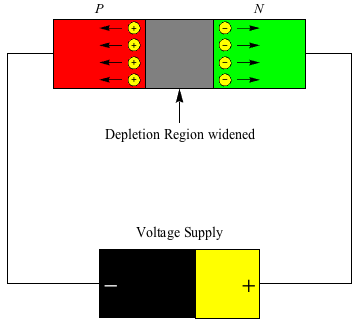Particle Physics
Gamma Ray Detectors
There are a bunch of different kinds of fancy detectors that measure radiation. How do they work? Amongst many other things, they work by forming electric fields.
The range of electromagnetic radiation is huge. And from gamma rays to radio waves, they all need detection from time to time, which is why we’ve made different kinds of detectors. We haven’t come up with one detector that could detect every kind of electromagnetic radiation, yet. We’re working on it.
Gamma rays, which form the highest frequency portion of the electromagnetic spectrum, interact with matter (i.e. the detector) by three different processes: photoelectric absorption, Compton scattering, and pair production.
The detector’s atoms become ionized by these super energetic photons called gamma rays. When that happens, primary charge carriers are created. These are just electron-hole pairs. When an electron is excited, moving to a new energy level in an atom, this looks just like a positive hole moving the other way.
These fancy detectors are made with semi-conductors. Semi-conductors conduct electricity under certain conditions, but not others, as their name implies. Semi-conductors are atoms like germanium and silicon that are “lonely” and form solid crystals with their valence electrons.
For example, germanium has 4 valence electrons and forms 4 covalent bonds7. If we bring a valence-5 atom next to it, then there’s an extra germanium electron now floating around, looking for a home. This is an n-type semiconductor.
Similarly, bring a valence-3 atom next to germanium and now what– there’s an excess number of positive holes, which form acceptor states. This is a p-type semiconductor.
That’s “n” for negative and “p” for positive. These physicists are pretty sneaky, huh?
Bring an n-type and a p-type semiconductor together and we have a P-N junction, otherwise known as a diode, shown below.

The center area contains the free electrons from the n-type semi-conductor which diffuse across the junction and into the p-type material. What happens then? Well, they combine with positive holes and get neutralized. The same thing happens for positive holes.
What are we then with? A depletion region, which is just a region where charged ions are stuck since there are no mobile carriers, and we don’t mean cell service, but moving ions. Since these charged ions are made up of both positive and negative ions, they form…they form…? Yes, they form an electric field.
Now, let’s go back to the gamma ray detector. Through the ionization of the germanium atoms, by photoelectric absorption, Compton scattering, or pair production, more electron-hole pairs are created in the atoms of the semiconductor. These electron-hole pairs drift under the influence of an external electric field towards their respective electrodes, where their motion is recorded as displacement current. This displacement current means an event occurred, which is what the detector is trying to, well, detect.
Is that all?
No. In an ideal world, this would be the end of it. We record the measured displacement current, which we translate as an event of gamma ray detection.
Since an ideal world is fictitious, we have to consider an electron acting out of turn. What if an electron that’s part of the detector tries to sneak across the depletion region and into the forbidden land in secret? This is called leakage current.
To minimize this scandalous behavior, physicists build gamma-ray detectors as reverse-bias diodes. These are P-N junctions, just as we’ve seen, except that the p-type material is connected to the negative terminal of a power supply, and vice-versa for the n-type material. This widens the depletion region such that in theory, any recorded current will be due to a gamma ray event.

Observe a reverse-bias diode above, with the p-type holes attracted to the negative side of the battery and the n-type electrons attracted to the positive side. We can see why leakage wouldn’t occur to the electrons easily in this state. Unpictured is the ammeter measuring the current to watch for a gamma ray event.
The low leakage current in a reverse diode may be further reduced by cooling the detector crystals to below 120 Kelvin, since low temperatures are synonymous with low energy, which robs electrons of the desire to “leak.”